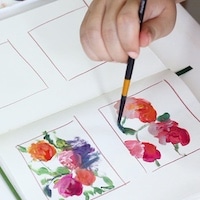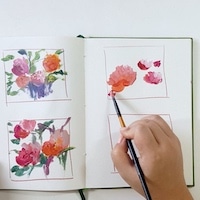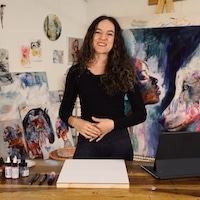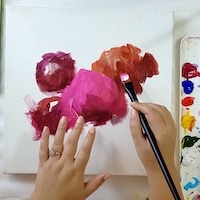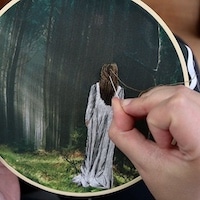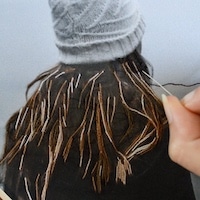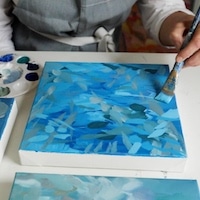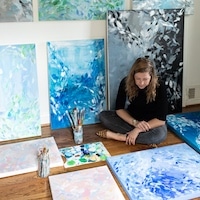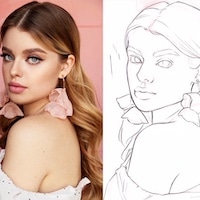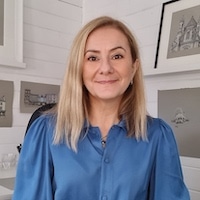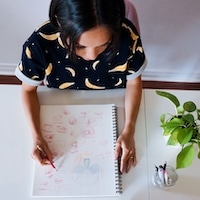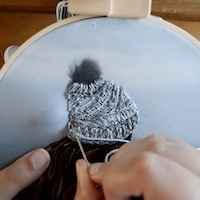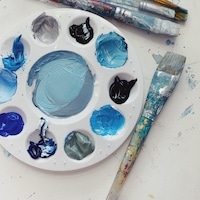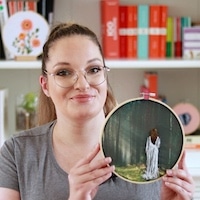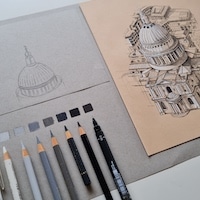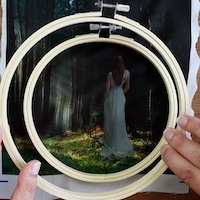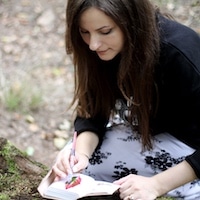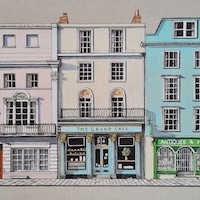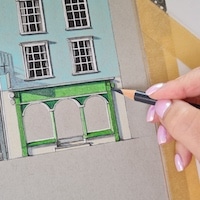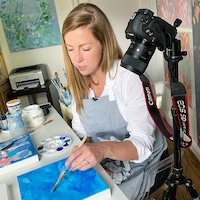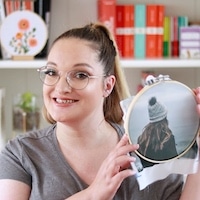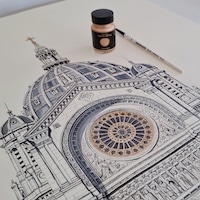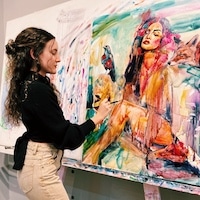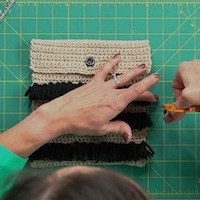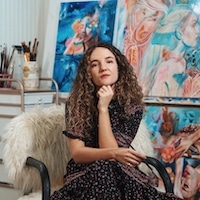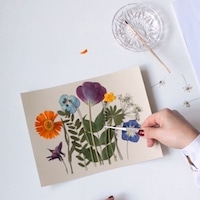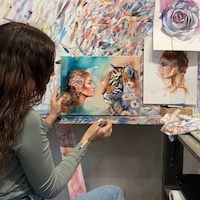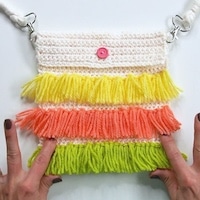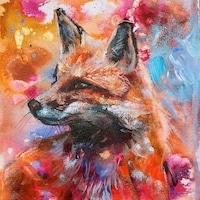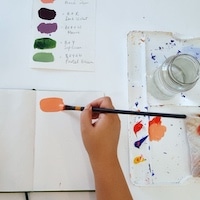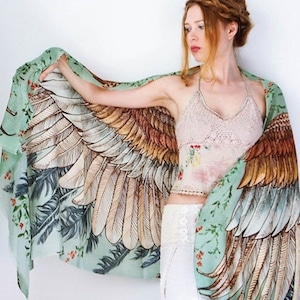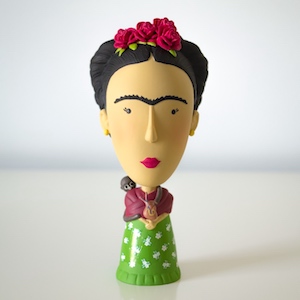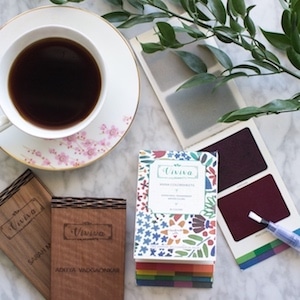
Stevie Shao (Photo: Brandon Shigeta)
For more than a decade, Hawaii Walls has been creating new cultural experiences in Honolulu thanks to a rich week of mural, painting, artist talks, and exhibitions. The 2025 edition, which concluded in late September, was no exception, with over 50 new murals created by local and international artists. As the brainchild of Jasper Wong, an artist, illustrator, and curator from Hawaii, it’s an extension of World Wide Walls, which brings public art to over 25 global cities.
In Hawaii, the focus is working with the community and, in particular, schools. Honolulu’s Farrington High School was the scene of much action during this year’s festival. By bringing art to this underserved community, Hawaii Walls is giving back and using art to uplift. Tranforming drab walls into colorful works of art serves as a bond for residents and encourages others to visit an area they might otherwise ignore.
My Modern Met had the opportunity to chat with Wong about the creation of Hawaii Walls and how it has transformed over the years. We also discuss the impact of the festival on the local community and how it functions to instill a sense of pride. Read on for our exclusive interview.
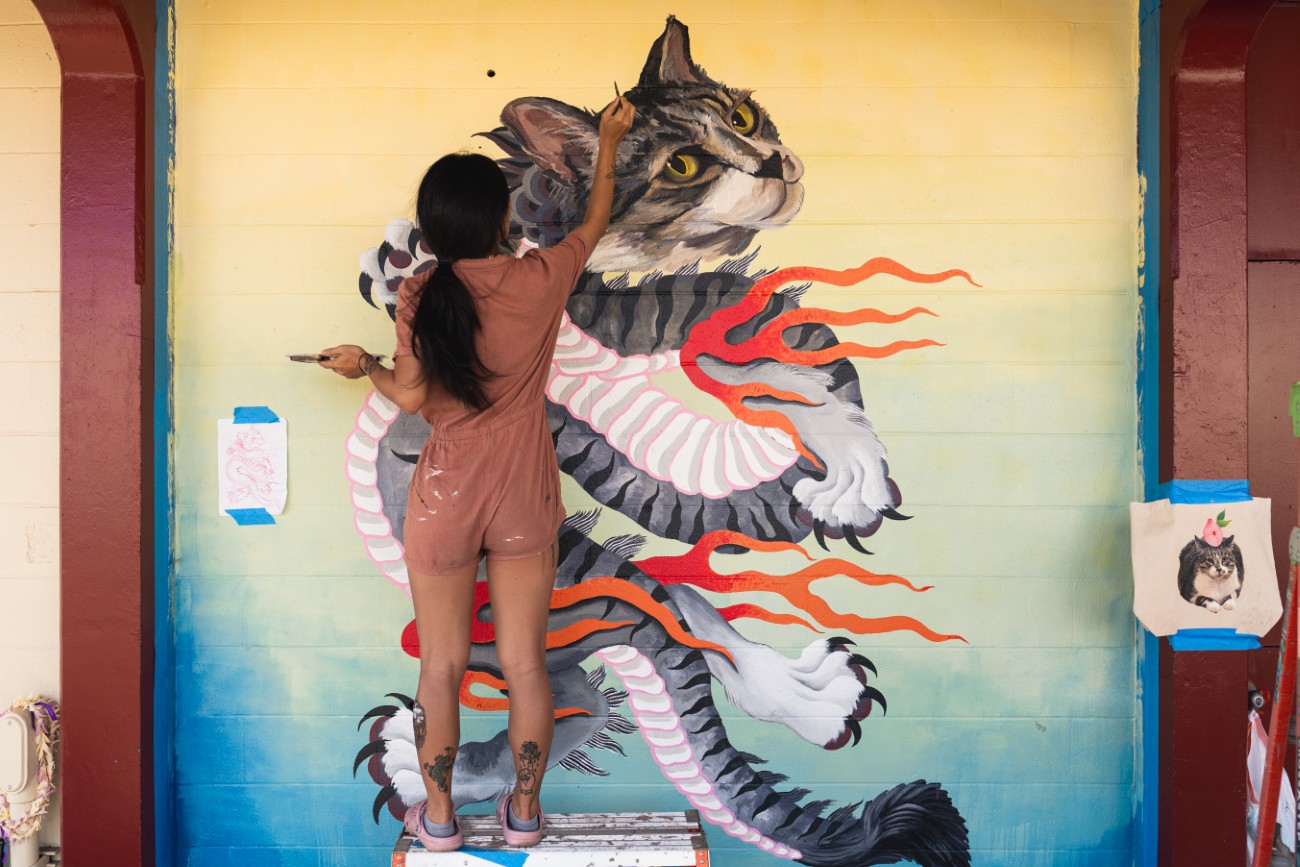
Photo: Sean Marrs
What makes Hawaii the perfect location for a street art festival?
I do not know if I would call it the perfect location because Hawaii has very little public funding for the arts and often lacks resources that larger cities take for granted. But Hawaii is home. I was born and raised here, and for me, the festival is a way to give back to my community. Art has the power to shape spaces and bring people together, and I wanted to create something here that would inspire the next generation in the same place that raised me.

Sachiko (Photo: Brandon Shigeta)
How has Hawaii Walls transformed since its first edition?
We first started back in 2011 in Kakaako, which at the time was primarily an industrial district in Honolulu. Back then, it was a forgotten part of the city that very few people visited. Through murals and community activations, we were able to bring color and energy to those walls. Slowly, the neighborhood transformed into a lively, vibrant place that both locals and visitors came to experience.
Three years ago, we moved the festival to Kalihi, which is a very different story. Kalihi is an underserved community, home to many low income families and public housing. There, we shifted our focus toward schools and community centers, places that serve as daily anchors in people’s lives. It has been powerful to see art uplift spaces that are directly tied to the community.
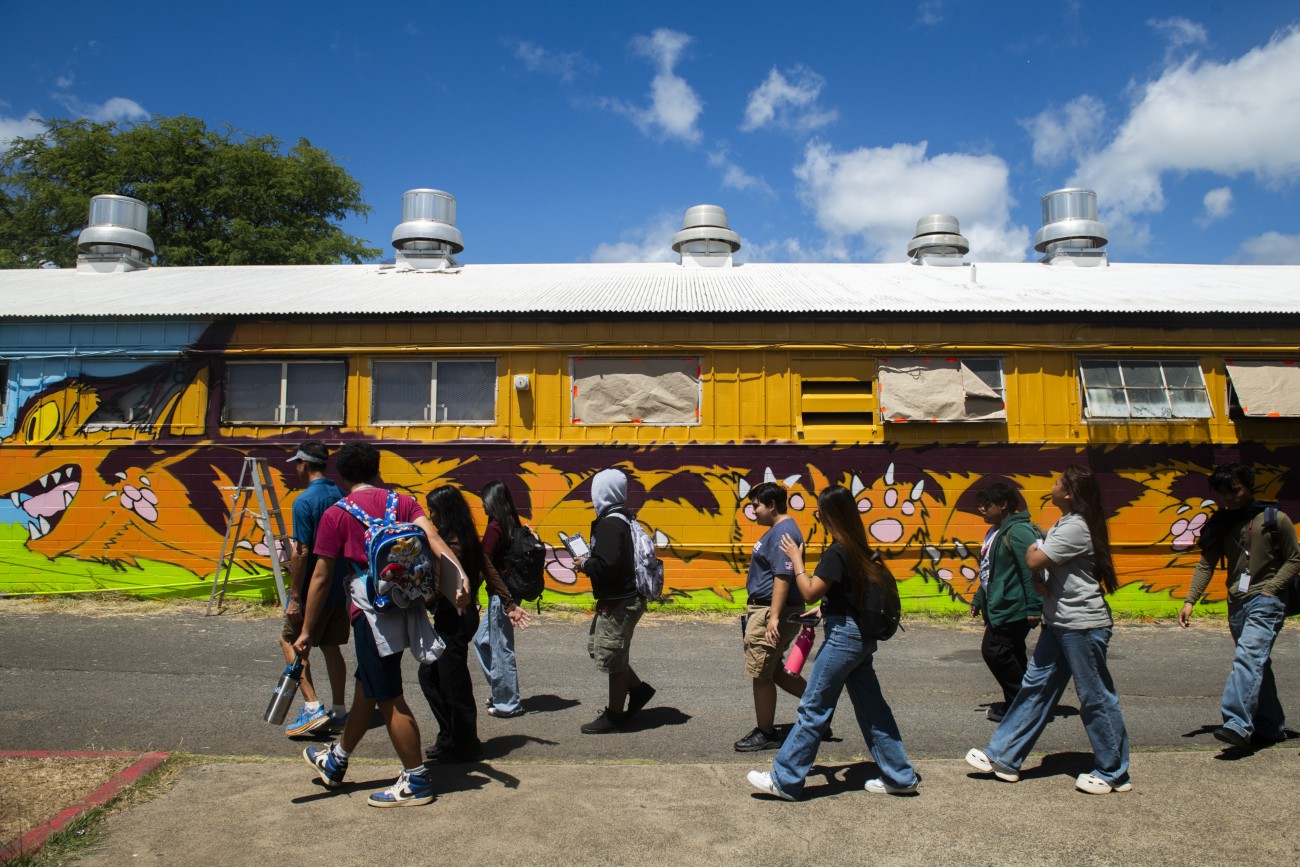
Farrington High School (Photo: Elyse Butler)
Can you share some highlights from this year’s festival?
The highlights are always the people. The reactions from students, teachers, and families are what make it meaningful. This year, many students jumped in to help paint alongside the artists. Watching them light up when they realized they had a hand in creating something lasting on their own campus was unforgettable. The encouragement, pride, and sense of ownership they felt are exactly why we do this.

Photo: Brandon Shigeta
The festival is more than just painting murals. Can you talk a bit about some of the collateral events and what they add to the experience?
Absolutely. Murals are at the heart of the festival, but we build the week out with exhibitions, artist talks, workshops, block parties, concerts, and community markets. These events create opportunities for people to engage with art in different ways, whether it is hearing an artist’s story, listening to live music, or just coming together to celebrate. It is about creating a full cultural experience, not just paintings on walls.

Oscar Canteros Jr. (Photo: Brandon Shigeta)
In your opinion, how has the festival made an impact on the community?
I think the biggest impact is accessibility. Too often, art gets cut from schools due to budget restrictions, or it feels out of reach because museums and galleries can be intimidating or expensive. By putting murals in public places, right where people live, work, and go to school, we are giving art back to the people. It becomes part of their daily lives. It is not something behind a ticket or a velvet rope. It is theirs.

Photo: Brandon Shigeta
For anyone coming to Honolulu, where should they go look for street art?
Kakaako still has one of the densest concentrations of murals in the islands, with work from artists around the world. In Kalihi, we have now created another hub for murals. Farrington High School, in particular, has become special, with one of the largest collections of murals at any school in the entire country. I encourage people to check it out on weekends or after school hours so as not to disturb the students.

DeeDee (Photo: Brandon Shigeta)
What do you hope that people take away from the experience of Hawaii Walls?
I hope they see that art matters. That art can transform spaces, build pride, and connect communities. More than anything, I hope people walk away believing that art is not a luxury. It is a vital part of life.

Photo: Sean Marrs

Photo: Brandon Shigeta
What is next for World Wide Walls?
We are excited to wrap up 2025 with two more festivals abroad, one in Shirahama, Japan, and another in Doha, Qatar. Each new location gives us a chance to connect with a different community, but the mission stays the same, to use art to bring people together.
World Wide Walls: Website | Instagram
My Modern Met granted permission to feature photos by World Wide Walls.
Related Articles:
Man Spends Over a Decade Beautifying His Brooklyn Neighborhood With Street Art [Interview]
Street Artist Shares Personal Meaning Behind Powerful Mural About Life and Death [Interview]

